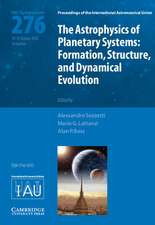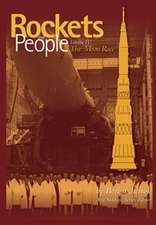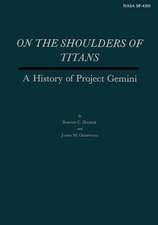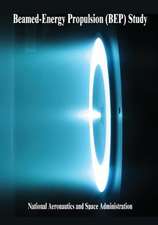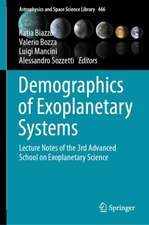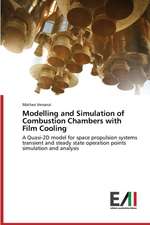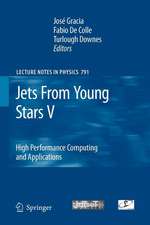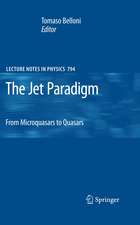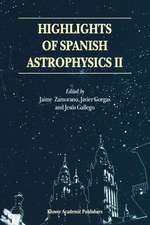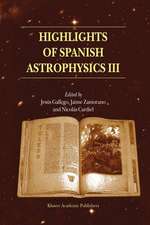Methods of Detecting Exoplanets: 1st Advanced School on Exoplanetary Science: Astrophysics and Space Science Library, cartea 428
Editat de Valerio Bozza, Luigi Mancini, Alessandro Sozzettien Limba Engleză Hardback – 21 apr 2016
| Toate formatele și edițiile | Preț | Express |
|---|---|---|
| Paperback (1) | 639.08 lei 43-57 zile | |
| Springer International Publishing – 22 apr 2018 | 639.08 lei 43-57 zile | |
| Hardback (1) | 645.28 lei 43-57 zile | |
| Springer International Publishing – 21 apr 2016 | 645.28 lei 43-57 zile |
Din seria Astrophysics and Space Science Library
- 24%
 Preț: 799.08 lei
Preț: 799.08 lei - 15%
 Preț: 647.92 lei
Preț: 647.92 lei - 18%
 Preț: 983.81 lei
Preț: 983.81 lei - 18%
 Preț: 790.28 lei
Preț: 790.28 lei -
 Preț: 359.85 lei
Preț: 359.85 lei -
 Preț: 389.70 lei
Preț: 389.70 lei - 20%
 Preț: 691.13 lei
Preț: 691.13 lei - 20%
 Preț: 816.17 lei
Preț: 816.17 lei - 18%
 Preț: 1011.27 lei
Preț: 1011.27 lei -
 Preț: 402.56 lei
Preț: 402.56 lei - 15%
 Preț: 664.93 lei
Preț: 664.93 lei -
 Preț: 398.15 lei
Preț: 398.15 lei - 18%
 Preț: 954.77 lei
Preț: 954.77 lei -
 Preț: 411.04 lei
Preț: 411.04 lei - 18%
 Preț: 1225.31 lei
Preț: 1225.31 lei - 18%
 Preț: 1843.29 lei
Preț: 1843.29 lei -
 Preț: 393.13 lei
Preț: 393.13 lei -
 Preț: 400.26 lei
Preț: 400.26 lei - 18%
 Preț: 953.82 lei
Preț: 953.82 lei - 18%
 Preț: 960.61 lei
Preț: 960.61 lei -
 Preț: 398.35 lei
Preț: 398.35 lei -
 Preț: 390.84 lei
Preț: 390.84 lei -
 Preț: 413.76 lei
Preț: 413.76 lei -
 Preț: 416.64 lei
Preț: 416.64 lei - 18%
 Preț: 947.67 lei
Preț: 947.67 lei -
 Preț: 404.51 lei
Preț: 404.51 lei - 18%
 Preț: 956.50 lei
Preț: 956.50 lei -
 Preț: 403.75 lei
Preț: 403.75 lei - 18%
 Preț: 1229.40 lei
Preț: 1229.40 lei - 18%
 Preț: 1224.99 lei
Preț: 1224.99 lei -
 Preț: 404.29 lei
Preț: 404.29 lei - 15%
 Preț: 654.77 lei
Preț: 654.77 lei - 18%
 Preț: 1248.20 lei
Preț: 1248.20 lei - 18%
 Preț: 955.25 lei
Preț: 955.25 lei - 18%
 Preț: 1846.28 lei
Preț: 1846.28 lei - 18%
 Preț: 1233.06 lei
Preț: 1233.06 lei - 18%
 Preț: 1234.77 lei
Preț: 1234.77 lei
Preț: 645.28 lei
Preț vechi: 759.15 lei
-15% Nou
Puncte Express: 968
Preț estimativ în valută:
123.47€ • 129.26$ • 102.17£
123.47€ • 129.26$ • 102.17£
Carte tipărită la comandă
Livrare economică 07-21 aprilie
Preluare comenzi: 021 569.72.76
Specificații
ISBN-13: 9783319274560
ISBN-10: 3319274562
Pagini: 150
Ilustrații: XV, 252 p. 109 illus., 35 illus. in color.
Dimensiuni: 155 x 235 x 16 mm
Greutate: 0.55 kg
Ediția:1st ed. 2016
Editura: Springer International Publishing
Colecția Springer
Seria Astrophysics and Space Science Library
Locul publicării:Cham, Switzerland
ISBN-10: 3319274562
Pagini: 150
Ilustrații: XV, 252 p. 109 illus., 35 illus. in color.
Dimensiuni: 155 x 235 x 16 mm
Greutate: 0.55 kg
Ediția:1st ed. 2016
Editura: Springer International Publishing
Colecția Springer
Seria Astrophysics and Space Science Library
Locul publicării:Cham, Switzerland
Public țintă
ResearchCuprins
1st Advanced School on Exoplanetary Science: Methods of detecting Exoplantes.- The Radial Velocity Method.- The Transit method.- The Microlensing method.- Direct imaging of Exoplanets.
Notă biografică
Valerio Bozza is a researcher in the "E.R. Caianiello" Department of Physics at the University of Salerno, Italy. Dr. Bozza gained his doctorate from Salerno University in 2002 for a thesis on "Pre-Big Bang cosmology: initial conditions and brane-worlds" and subsequently undertook research at CERN’s TH Unit. His fields of interest include cosmology (string cosmology, bouncing cosmologies, cosmological perturbations, brane worlds, and transplanckian effects), gravitational lensing by black holes, and microlensing (the search for extrasolar planets, binary microlensing modeling, and microlenses surrounded by gas clouds). He is the author of more than 90 scientific publications.
Luigi Mancini works as a Research Staff Scientist in the Planet and Star Formation Department of the Max Planck Institute for Astronomy in Heidelberg, Germany. As a member of the HATSouth project team, his research is currently focused primarily on the search for extrasolar planets transiting nearby brightstars in the Southern Hemisphere. Dr. Mancini is also leading a project for accurate measurements of the properties of extrasolar planets via photometric observations and is involved in the GAPS (Characterizing the Global Architectures of Planetary Systems) project. He holds the Italian National Academic Qualification as an Associate Professor and is the author of approaching 100 papers in peer-reviewed journals.
Alessandro Sozzetti is an astronomer at the Osservatorio Astronomico di Torino, INAF (National Institute for Astrophysics), Italy. He studied Physics and Astronomy at the University of Pittsburgh in the USA. His main research interests include the search for and characterization of extrasolar planets, brown dwarfs, and planetary systems employing spectroscopic, photometric, and astrometric techniques and utilizing both ground-based and space-borne observatories; the formation and early evolution of stars and planets; and the characterization of planet host stars andtheir environment. He is the author of more than 120 scientific publications.
Luigi Mancini works as a Research Staff Scientist in the Planet and Star Formation Department of the Max Planck Institute for Astronomy in Heidelberg, Germany. As a member of the HATSouth project team, his research is currently focused primarily on the search for extrasolar planets transiting nearby brightstars in the Southern Hemisphere. Dr. Mancini is also leading a project for accurate measurements of the properties of extrasolar planets via photometric observations and is involved in the GAPS (Characterizing the Global Architectures of Planetary Systems) project. He holds the Italian National Academic Qualification as an Associate Professor and is the author of approaching 100 papers in peer-reviewed journals.
Alessandro Sozzetti is an astronomer at the Osservatorio Astronomico di Torino, INAF (National Institute for Astrophysics), Italy. He studied Physics and Astronomy at the University of Pittsburgh in the USA. His main research interests include the search for and characterization of extrasolar planets, brown dwarfs, and planetary systems employing spectroscopic, photometric, and astrometric techniques and utilizing both ground-based and space-borne observatories; the formation and early evolution of stars and planets; and the characterization of planet host stars andtheir environment. He is the author of more than 120 scientific publications.
Textul de pe ultima copertă
In this book, renowned scientists describe the various techniques used to detect and characterize extrasolar planets, or exoplanets, with a view to unveiling the “tricks of the trade” of planet detection to a wider community. The radial velocity method, transit method, microlensing method, and direct imaging method are all clearly explained, drawing attention to their advantages and limitations and highlighting the complementary roles that they can play in improving the characterization of exoplanets’ physical and orbital properties. By probing the planetary frequency at different distances and in different conditions, these techniques are helping astrophysicists to reconstruct the scenarios of planetary formation and to give robust scientific answers to questions regarding the frequency of potentially habitable worlds. Twenty years have passed since the discovery of a Jupiter-mass companion to a main sequence star other than the Sun, heralding the birth of extrasolar planetary research; this book fully conveys the exciting progress that has been achieved during the intervening period.
Caracteristici
Clearly describes the different techniques used to detect and characterize exoplanets Explains the techniques’ advantages and limitations and their complementary roles Meets the needs of researchers in planetary science looking to expand their knowledge of detection techniques Includes supplementary material: sn.pub/extras



